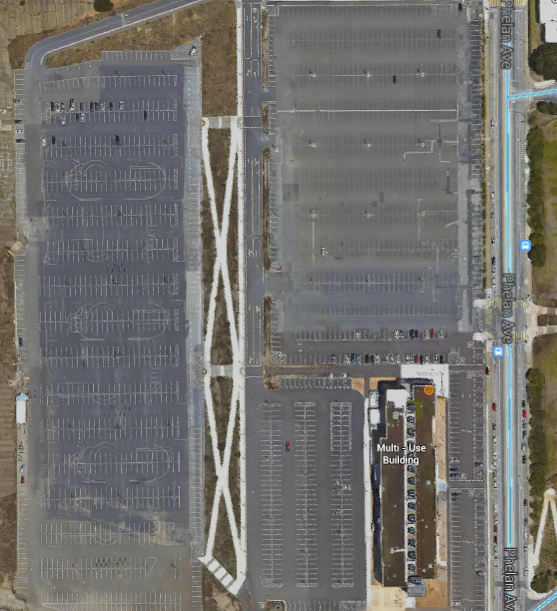
By Tim Redmond
DECEMBER 12, 2014 – Almost 30 years ago, the San Francisco Planning Commission heard a proposal to develop the empty Balboa Reservoir for affordable housing. There was talk, and more talk, and nothing ever happened.
Eventually, the San Francisco PUC allowed City College to build on part of the site. The rest is just parking.
And yesterday the planners heard about it again.
Mayor Ed Lee is pushing to use surplus public property to build housing – and at the hearing, some very different perspectives emerged.
Among them: Should the city decide how much money it has, and then look for ways to spend it on housing – or should the city decide how much housing it needs, and look for the money to fund it?
Should the public land be given in part to private developers who can help fund affordable housing by building market-rate housing, and what should the thresholds be?
Along the way, we heard some fascinating figures about the actual cost of building housing.
I don’t think anyone opposes the idea of using public land for housing. Some people at the hearing, and some commissioners, suggested that small local businesses and nonprofits, which are struggling in this tech boom, ought to be part of the picture, too, but the concept Lee’s office put forward is pretty popular.
In theory.
But as Peter Cohen, co-director of the Council of Community Housing Organizations, noted, the devil is in the details.
For example, Mike Martin, project director at the Mayor’s Office of Economic and Workforce Development, said that there are buildable sites for 4,000 units that could be developed by 2020, with half of that set aside for low- and moderate-income housing. Some of that would be done with a “mixed income model, using the private sector.”
But Cohen pointed out that the city has already met 100 percent of its needs for private-sector market-rate luxury housing, but is far behind its General Plan goals for housing at all other levels. Any public land that can accommodate between 50 and 200 units should be set aside with a “clear priority for 100 percent affordable housing,” he said.
On some larger sites – like the Balboa Reservoir – a larger mixed-use project might work, but not at anything like the currently required levels of affordability.
Cohen’s organization proposed that larger sites include
A 50/10/40 mix of development. At least 50% of all units should be affordable to very-low and low-income households, per tax credit guidelines, at a maximum of 60% AMI, to be built by nonprofit developers. Another 10% (which is 20% of the remaining 50% to be built by market-rate developers) could be affordable at a range of moderate income households, between 60% AMI and 120% AMI, which can be achievable through 80/20 deals for on-site rentals and/or the standard 20% off-site inclusionary project taking advantage of the “pricing dial” which will allow flexibility in BMRs affordability targeting. And depending on location and tenure, the remaining 40% of units could be priced at a mix of market rate and upper middle-income above 120% AMI.
That’s a bit complicated, but it boils down to this: On land owned by the public, even with private partners, at least 60 percent of the housing developed should be below-market rate. That’s what the city’s own General Plan calls for – and if the city already owns the land, it ought to be possible.
Joseph Smooke, who is on the board of the South of Market Community Action Network, noted that when the city devotes public land for any form of market-rate housing “you are subsidizing market-rate development.”
Planning Commission member Michael Antonini argued that higher levels of affordability cost more money, and “it has to pencil out for anyone to build anything.” He’s a fan of using the private sector.
But what, exactly, does it mean to “pencil out?” We got some interesting figures from Kate Hartley, deputy director of the Mayor’s Office of Housing.
The cost of acquiring land in San Francisco runs from $65,000 to $165,000 a unit, she said – and that’s on top of the roughly $500,000 it costs to construct that unit. Her figures suggest that private developers will never be able to build affordable housing, and that prices will never come down to affordable levels even if they build 100,000 new units.
The subsidy for affordable units is as much as $250,000 a unit, she said. “We would love to do 100 percent affordable, but a 200-unit project costs $50 million. There’s an opportunity cost; what else could we do with that money?”
Well, one thing you could do is buy up existing rent-controlled housing stock and keep it affordable and out of the hands of speculators. But that, said Cohen, is really the wrong question.
“We should decide what we need as a city, and what it will cost,” he said. “Then we can have a conversation about how to get those additional resources.
“If we say we can’t afford to build it, so let’s just turn it over to the private sector, we are shooting ourselves in the foot.”
So let’s talk a bit about that approach. Supposed, for example, the city decided it needs 10,000 more affordable units in the next five years. That’s more than twice what the mayor is talking about, and it’s still short of what we need, but it would be a big start. If Hartley is right, and I have no reason to doubt her, that would cost about $2.5 billion.
Typically the city gets federal and state matching funds for affordable housing, which might put the local share at closer to $1 billion. In 2008, a measure to approve almost a billion in bonds to rebuild San Francisco General Hospital passed with 83 percent of the vote. We just approved a half-billion bond for Muni.
Would the San Francisco voters be willing to approve a large-scale affordable housing bond, with enough money to build 10,000 permanently affordable units? I don’t see why not.
Are there other ways a city this rich, and this booming with new (largely under-taxed) wealth, could come up with a revenue stream of $200 million a year for five years? Or some mix of new revenue and bonds?
Of course we could. Considering the size and importance of the problem, which pretty much dwarfs everything else on the political agenda right now, it’s not really that much money.
So how about we start with Cohen’s idea: How much new housing do we need at which levels in the next five and ten years? What will it take to accommodate our workforce (NOT to accommodate short-term rental units and luxury apartments for people who don’t live here)?
If the mayor wants 30,000 units in the next 15 years, how many of them ought to be market-rate based on our actual workforce? If the General Plan is right, and 60 percent need to be affordable at some level, that means 18,000 below-market-rate units.
How are we going to come up with the $4.5 billion that will cost?
The current model – allow market-rate developers to pay for building a small percentage of affordable housing – will never get us anywhere close to that number. What are the other options?
And why isn’t the mayor even talking about that?




